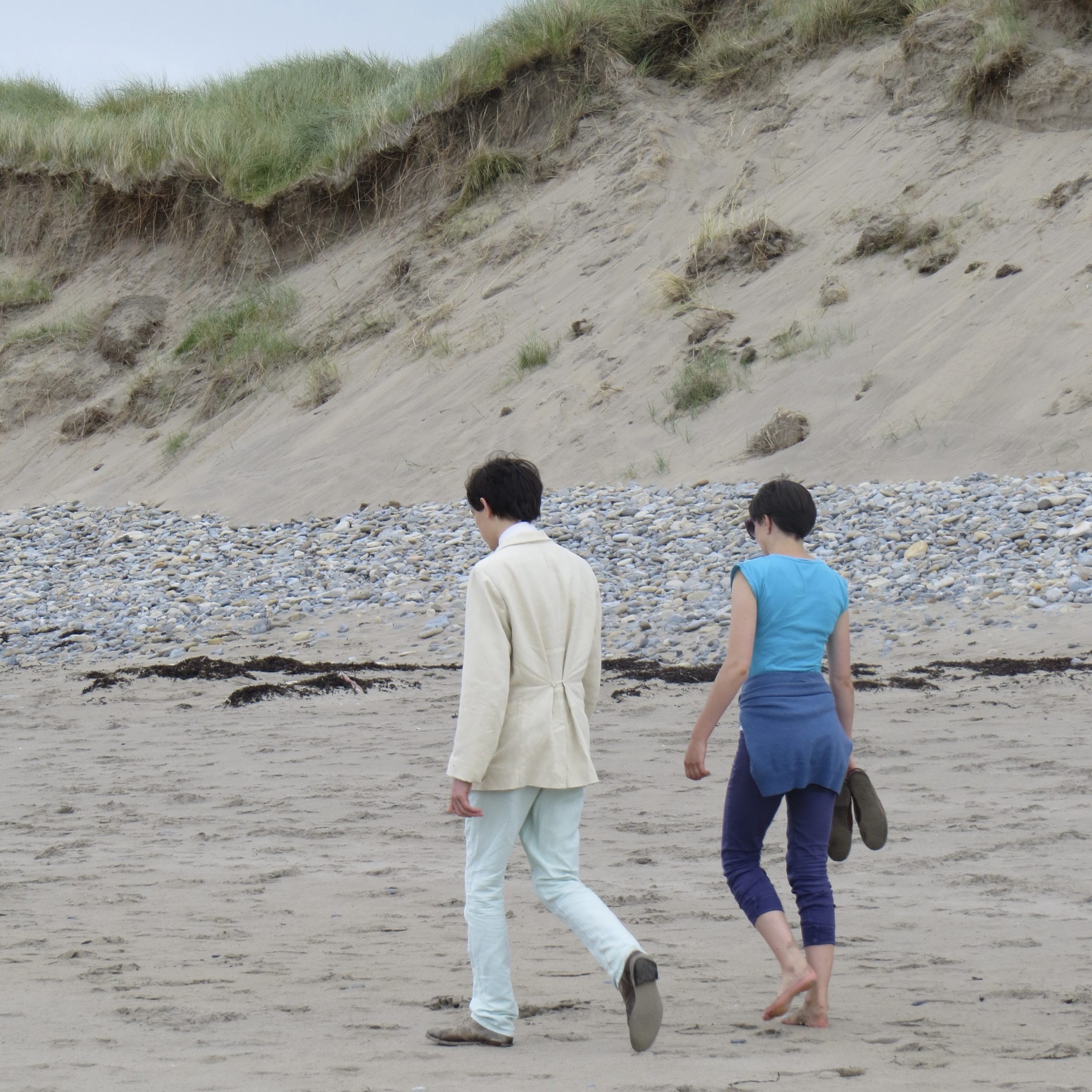
On Sligo:
I was a small boy when my father first took me with him to a fitting for a suit. His tailor was Mr. Joseph Martin. Even then I was quite interested in suits and fashion and, indulging my interest, this extremely kind Irishman extended to me a triangle of tailors chalk. This was my first meeting with Joseph, the third generation of Martin’s to take to the tailor’s sheers in their shop in a courtyard behind Teeling Street, Sligo. It was some years until I would meet him again, by then my interest in fashion had compounded and become intent, the piece of chalk he gave me, a little worn down by use.
I truly got to know the Martin’s when I was fifteen and I first went to stay with them at their home overlooking Sligo Bay. It was a more than usually glorious summer for the west coast of Ireland with sun in abundance. The beauty of the landscape demanded adoration, the broad expanse of the estuary, the lofty mound of Knocknaree with its crowning kern, the sandy beaches of Strandhill, the romantic ruin of Killaspugbrone church, the slope sided Lough Gill, holding within its waters the isle of Innesfree, looked over by Parkes Castle, looking like a scene from Ivanhoe. This beauty twinned with the pleasure of spending my days working in a tailor’s workshop, alongside craftspeople of great skill and kindness, combined to create a lasting fondness for people and place.
I have learned so much in the time I have spent there, sewing in a corner of the workshop, sat on a stool, basting away or practicing stiches on heavy squares of military overcoating offcuts, or watching the machinists tacking and then flying along seams with nonchalant perfection, or watching the hand finishing of buttons and bar tacks, the yards of prick stitching.
My favourite times were spent downstairs in the tailors shop, where Joseph’s cutting table stands and the bunch books sit in piles on the shelves. Lengths of cloth lie in neat rolls on the floor and on the table, end pieces and new pieces, all awaiting transformation. In this den of sartorial style, I loved watching on as Joseph marked out pattern after pattern, the chalk slipping across the cloth with such ease and precision, the old boxwood curves and rules, as old as the business, so familiar in his hands, effortlessly creating the shapes they have sculpted for well over a hundred years. As we chat, the suit takes on its first form, these flat pieces will become articulated by stitch and seam and become three dimensional garments. It is a particularly exciting moment, the genesis of a piece, and the skill involved in drawing this flat plan is formidable. My knowledge hungry eyes followed the fingers of my soft-spoken sage, and I took home with me each time, an encyclopaedia of movements and marks to attempt.
It’s hard to appreciate the difficulty of pattern cutting until one has tried it. It is clearly quite technical but you would be forgiven for thinking that if you followed a set of rules or steps and measured everything properly, most people could do it. This is probably true of simple, tried and tested patterns. However, to be a good cutter, to confront new shapes and create true fit and form, one has to have so much more than a list of steps. One has to cultivate a true understanding of what shapes do when joined together, how they interact, how cloth interacts with pattern, how pattern and cloth interact with the body and how to manipulate these factors to create the desired effect. This is hard, very hard, and is the result of a great deal of practice and experience. However, when one sees a master such as Joseph plucking form from a length of cloth, it seems almost like a sixth sense. As a teenager, witnessing this skill, I made it my ambition to learn to cut as fluidly, as intuitively, as knowledgably as Joseph.
Having finished cutting, Joseph would sometimes turn to an almost-finished jacket lying at his elbow, or draped over a mannequin, and begin a collar. The collar of a tailored jacket is one of the more time consuming parts of the construction and sets it apart from a mass produced jacket. The handmade collar is constructed from one piece of melton (a felted wool fabric) one piece of canvas, and the top or body cloth. The melton and the canvas are shaped by the tailor with padding stiches and a steam iron, over a hoarse (a curved, padded form) creating the curve of a perfect collar. The under collar is stitched in place and then the top cloth laid over it, the tailor shaping and moulding it into alinement, this skill is best shown in a checked or striped cloth, where one aims to have a straight edge of the pattern running around the collar and, if possible, matching up with the pattern over the chest or on the lapel. Once more I would glean technique as I watched Joseph carefully manipulate the different cloths to create a sculpted form. The thimbled middle finger and the strong forefinger and thumb joining this form to the curve of the collar seam with exacting firmness. The purposefulness of this fine technique, the impossibility of replicating it with a machine, the beauty of the outcome, affirmed a love of the hand sewn that has come to define so much of what I do today. I wanted that skill, that intuit, that cleverness in my own hands.
